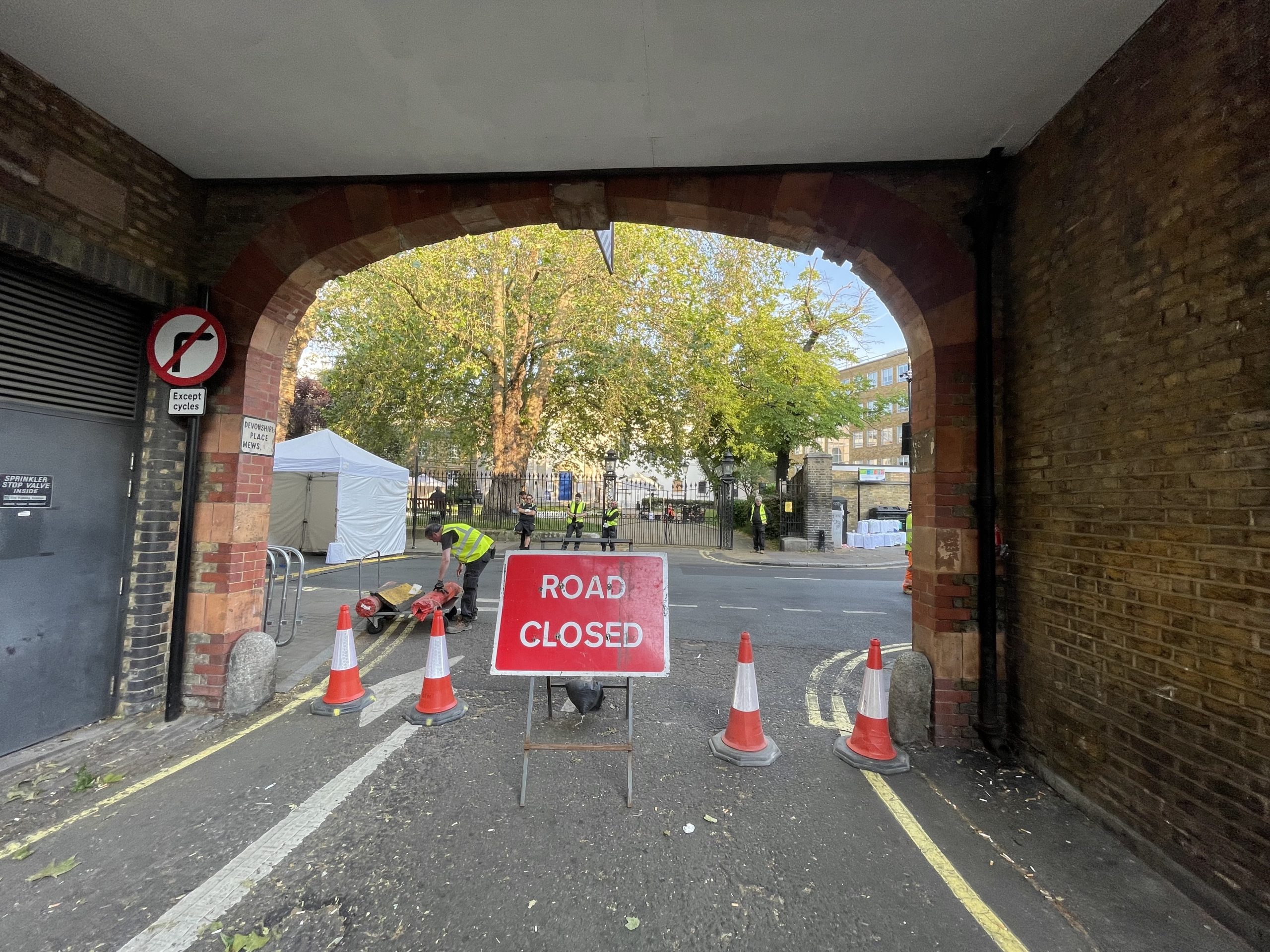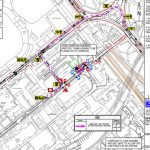Navigating Road Closures: How to Stay Ahead with Effective Diversion Planning
Navigating Road Closures: How to Stay Ahead with Effective Diversion Planning
Navigating road closures can be a frustrating and time-consuming experience for drivers, but with effective diversion planning, you can stay ahead of the game. Whether it's due to construction, accidents, or special events, road closures are inevitable and can disrupt your daily commute or travel plans. However, by following a few key strategies, you can minimise the impact and find alternative routes that will keep you moving.
Effective diversion planning involves staying informed about upcoming road closures in your area. This means regularly checking local news sources, transportation department websites, or utilising navigation apps that provide real-time updates. By knowing ahead of time which roads will be closed, you can plan your journey accordingly and avoid unnecessary delays.
Another important aspect of diversion planning is to familiarise yourself with alternative routes. This might involve exploring different roads, highways, or utilizing public transportation to bypass the closed section. By being prepared with multiple options, you'll be able to adapt quickly and find the most efficient route to your destination.
In this article, we will dive deeper into the strategies and tools you can use to effectively navigate road closures. So, if you're tired of getting stuck in traffic due to unexpected road closures, keep reading to learn how to stay ahead with effective diversion planning.
Understanding the impact of road closures
Navigating road closures can be a frustrating and time-consuming experience for drivers, but with effective diversion planning, you can stay ahead of the game. Whether it's due to construction, accidents, or special events, road closures are inevitable and can disrupt your daily commute or travel plans. However, by following a few key strategies, you can minimise the impact and find alternative routes that will keep you moving.
Effective diversion planning involves staying informed about upcoming road closures in your area. This means regularly checking local news sources, transportation department websites, or utilising navigation apps that provide real-time updates. By knowing ahead of time which roads will be closed, you can plan your journey accordingly and avoid unnecessary delays.
Another important aspect of diversion planning is to familiarise yourself with alternative routes. This might involve exploring different roads, highways, or utilising public transportation to bypass the closed section. By being prepared with multiple options, you'll be able to adapt quickly and find the most efficient route to your destination.
In this article, we will dive deeper into the strategies and tools you can use to effectively navigate road closures. So, if you're tired of getting stuck in traffic due to unexpected road closures, keep reading to learn how to stay ahead with effective diversion planning.
The importance of effective diversion planning
Road closures can have a significant impact on individuals, businesses, and the overall flow of traffic. Understanding these impacts is crucial for effective diversion planning. When a road is closed, it can lead to traffic congestion, longer travel times, increased fuel consumption, and heightened frustration among drivers. For businesses, road closures can disrupt deliveries, impact customer access, and result in financial losses.
Additionally, road closures can have a ripple effect on surrounding roads, causing traffic to spill over onto alternative routes. This can lead to increased congestion and delays, affecting not only those directly impacted by the closure but also those using alternative routes. Recognizing the broader impact of road closures is essential for devising effective diversion plans that minimise disruption and maximise efficiency.
Steps to take before a road closure
Effective diversion planning is crucial for mitigating the negative effects of road closures. By having a well-thought-out plan in place, drivers, businesses, and transportation authorities can work together to minimize the impact on the community. Diversion planning ensures that traffic continues to flow smoothly, alternative routes are clearly marked, and drivers are provided with up-to-date information to make informed decisions.
One of the key benefits of effective diversion planning is the ability to reduce travel times and congestion. By identifying alternative routes and optimising traffic flow, drivers can avoid heavily congested areas and reach their destinations more quickly. This not only benefits individual drivers but also improves the overall efficiency of the transportation network.
Furthermore, effective diversion planning can enhance safety by minimising the risk of accidents and reducing driver frustration. When drivers are well-informed about road closures and provided with clear diversion instructions, they are less likely to make impulsive and potentially dangerous decisions. This, in turn, contributes to a safer and more harmonious road environment for everyone.
Assessing alternative routes and options
Before a road closure occurs, there are several important steps that can be taken to facilitate effective diversion planning. These steps involve gathering necessary information, assessing potential alternative routes, and communicating with stakeholders.
The first step is to stay informed about upcoming road closures. This can be done by regularly checking local news sources, transportation department websites, or utilising navigation apps that provide real-time updates. By staying up-to-date, you can plan your journey accordingly and avoid unnecessary delays.
Next, it's important to assess alternative routes and options. This might involve exploring different roads, highways, or utilising public transportation to bypass the closed section. By familiarising yourself with multiple options, you'll be able to adapt quickly and find the most efficient route to your destination.
Communicating with stakeholders is another crucial step in effective diversion planning. This includes notifying affected businesses, residents, and transportation authorities about the upcoming closure and providing them with information on alternative routes. By involving stakeholders in the planning process, you can ensure that everyone is on the same page and minimise confusion.
Communicating with stakeholders and the public
When faced with a road closure, having alternative routes and options at your disposal is essential. By assessing the available alternatives, you can choose the best route that suits your needs and avoids potential congestion.
One way to assess alternative routes is by utilising navigation apps or online mapping services. These tools provide real-time traffic updates and can suggest the most efficient detour based on current conditions. They take into account factors such as traffic flow, road closures, and estimated travel times to help you make informed decisions.
In addition to technology, it's also important to familiarise yourself with the local road network. By exploring the area and identifying potential alternative routes in advance, you'll be better prepared to navigate road closures when they occur. This might involve identifying secondary roads, side streets, or even utilising public transportation options.
When assessing alternative routes, it's important to consider factors such as distance, traffic volume, road conditions, and potential bottlenecks. By evaluating these factors, you can select the most efficient and least congested route for your journey.
Coordinating with local authorities and emergency services
Effective communication is a vital component of diversion planning. By keeping stakeholders and the public well-informed about road closures and alternative routes, you can minimise confusion and ensure a smooth transition.
One way to communicate with stakeholders is by sending out notifications in advance of the closure. This can be done through various channels, including email, text messages, social media, and traditional media outlets. Providing clear and concise information about the closure, alternative routes, and expected duration will help stakeholders plan accordingly and minimise disruption.
For the general public, it's important to use a variety of communication methods to reach a wider audience. This might involve posting signs along affected roads, updating navigation apps with real-time closure information, and utilising social media platforms to share updates and answer questions. By using multiple channels, you can ensure that the information reaches as many people as possible.
In addition to proactive communication, it's also crucial to establish a feedback mechanism that allows stakeholders and the public to provide input and report any issues. This can be done through dedicated phone lines, email addresses, or online platforms. By actively listening to feedback and addressing concerns, you can improve the effectiveness of your diversion planning efforts.
Implementing a diversion plan
Effective diversion planning requires close coordination with local authorities and emergency services. By working together, you can ensure that emergency response times are not compromised, and public safety is maintained.
Before implementing a diversion plan, it's important to consult with local authorities and emergency services to gain their input and expertise. They can provide valuable insights into traffic flow patterns, potential bottlenecks, and alternative routes that are suitable for emergency vehicles.
During a road closure, it's essential to maintain open lines of communication with local authorities and emergency services. This allows for real-time updates on the situation and ensures that any necessary adjustments to the diversion plan can be made promptly.
Additionally, it's important to establish a clear chain of command and designated points of contact for all involved parties. This helps streamline communication and ensures that everyone is working towards a common goal.
Monitoring and adapting the diversion plan
Once all the necessary information has been gathered, alternative routes assessed, and communication channels established, it's time to implement the diversion plan. This involves putting the plan into action and providing clear instructions to drivers on how to navigate the closure.
One effective way to implement a diversion plan is by utilizing signage. By strategically placing signs along affected roads, drivers can be directed to alternative routes and informed about the closure ahead. Clear and concise signage is crucial for minimising confusion and ensuring that drivers can navigate the diversion smoothly.
In addition to signage, it's important to update navigation apps and online mapping services with the diversion plan. This ensures that drivers using these tools are provided with real-time instructions and can make informed decisions about their route.
Furthermore, it's essential to monitor traffic flow during the implementation phase. This allows for any necessary adjustments to be made in real-time to optimize traffic flow and minimise congestion.
Evaluating the success of the diversion plan
Effective diversion planning is an ongoing process that requires continuous monitoring and adaptation. By regularly assessing the effectiveness of the diversion plan, you can identify any issues or bottlenecks and make necessary adjustments.
One way to monitor the diversion plan is by collecting data on traffic volume, travel times, and congestion levels. This can be done through traffic monitoring cameras, sensors, or even feedback from drivers. By analysing this data, you can identify any areas of concern and take proactive measures to alleviate congestion.
In addition to data analysis, it's important to actively seek feedback from stakeholders and the public. This can be done through surveys, focus groups, or public meetings. By listening to their experiences and suggestions, you can gain valuable insights into the effectiveness of the diversion plan and make improvements where necessary.
Conclusion: The key to successful diversion planning
After the road closure has ended and traffic has returned to normal, it's important to evaluate the success of the diversion plan. This involves analysing the data collected, reviewing feedback from stakeholders, and identifying areas for improvement.
One key metric to evaluate is the overall impact on travel times and congestion. By comparing data from before, during, and after the closure, you can determine whether the diversion plan was effective in minimising disruption and reducing travel times.
Additionally, it's important to assess stakeholder satisfaction and feedback. This can be done through surveys or interviews to gauge their experience with the diversion plan and identify any areas for improvement.
By evaluating the success of the diversion plan, you can learn from the experience and make adjustments for future road closures. This continuous improvement process ensures that diversion planning efforts are constantly evolving and becoming more effective.






Comments are closed.